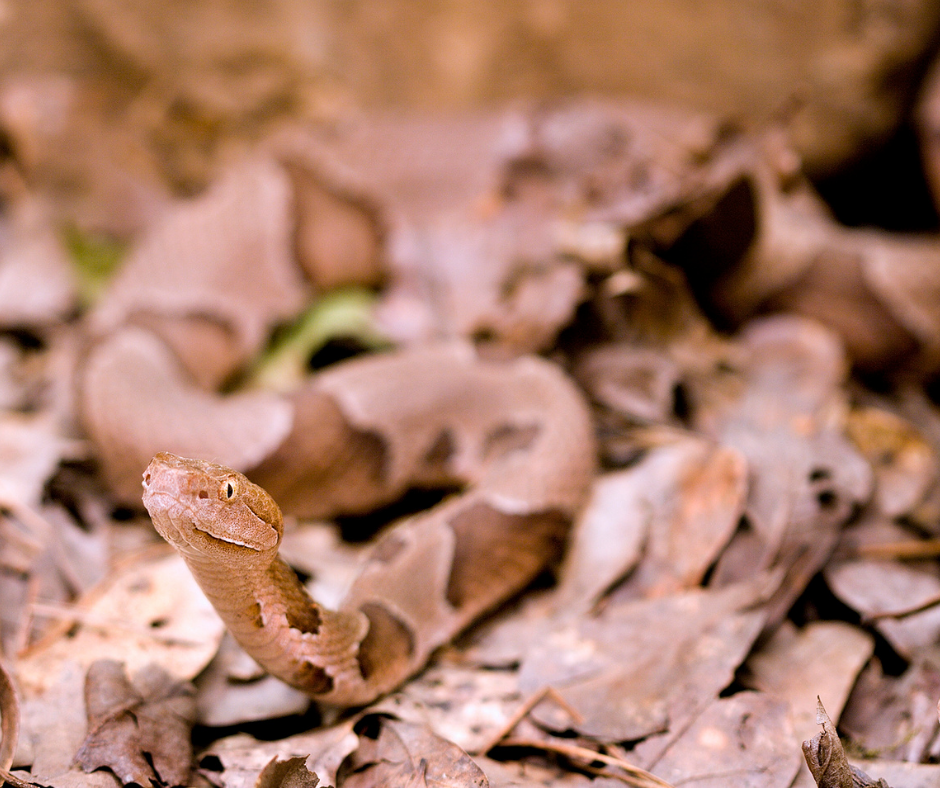
It’s baby snake season here in southern, middle Tennessee. Of the four venomous snakes found in Tennessee (copperheads, timber rattlesnakes, pygmy rattlesnakes, and cottonmouths or water moccasins), locals should be most wary of baby copperheads.
Females give live birth to between one and 21 baby snakes each fall with seven being the average. These youngsters blend in nearly perfectly in fallen leaves and ground cover. They don’t like open spaces like fields and instead will hide under logs, rocks, and leaf piles. They’ve been know to follow prey into backyards where they remain wrapped around pet watering bowl or inside a child’s toy. Those clearing debris in an overgrown area, or those cleaning out barns or outbuildings should be especially careful.
They aren’t especially aggressive but will strike if cornered. A copperhead bite isn’t usually life-threatening for adult as their venom isn’t all that potent but a bite can quickly escalate in a small child or pet.
If you encounter one, its best just to walk away say the folks at the Tennessee Wildlife Resource Agency. Attempting to kill or remove the snake could result in a bite. Plus, unless it poses an immediate threat, all snakes in Tennessee are protected and indiscriminate killing is illegal. Why? Because they serve a purpose in the local ecosystem, says the state UT Extension office.
“Snakes play a vital role in our natural communities, helping keep rodent populations in check and providing food for other predators,” they say on their website. “If snakes are common around the house, it is probably because there is an abundance of rodents in the area.”
According to the Tennessee Herpetological Society, venomous snakes in Tennessee all belong to a family of snakes called pit vipers, who have specialized, heat sensing pit on the front of their head. They possess an arrowhead shaped head that is offset from the rest of their body. With non-venomous snakes it’s often hard to tell where the head ends and the body begins. They also have vertical eyes with an elliptical pupil.
Only 10-12 people die from snake bites each year in the United State. In the past 40 year, there have only been seven recorded deaths from snakebites in Tennessee, according to Craig Harper, an Extension Wildlife Specialist. If bitten, you should immediately seek medical treatment.
To learn more about copperhead snakes, visit the Tennessee Wildlife Resource Agency (TWRA) website. •
{The Lynchburg Times is a nonpartisan, independent community newspaper serving Lynchburg, Tennessee and the surrounding counties. We are dedicated to public service journalism for the greater good of our community. You can support us, by clicking here.}
